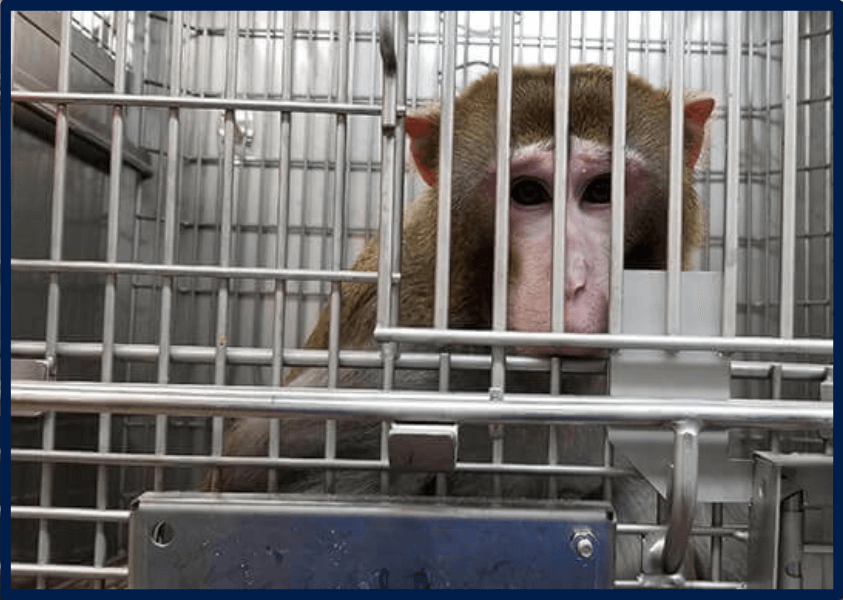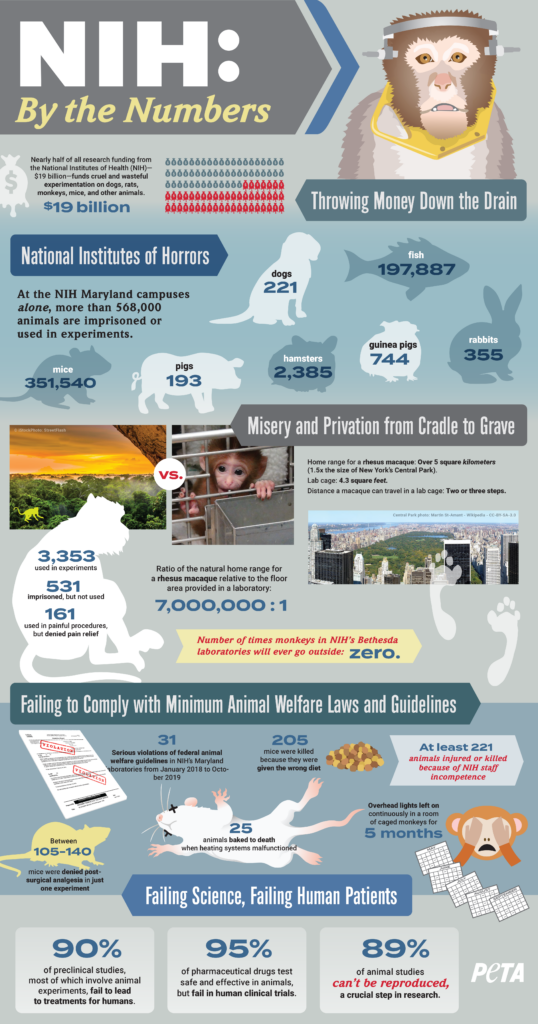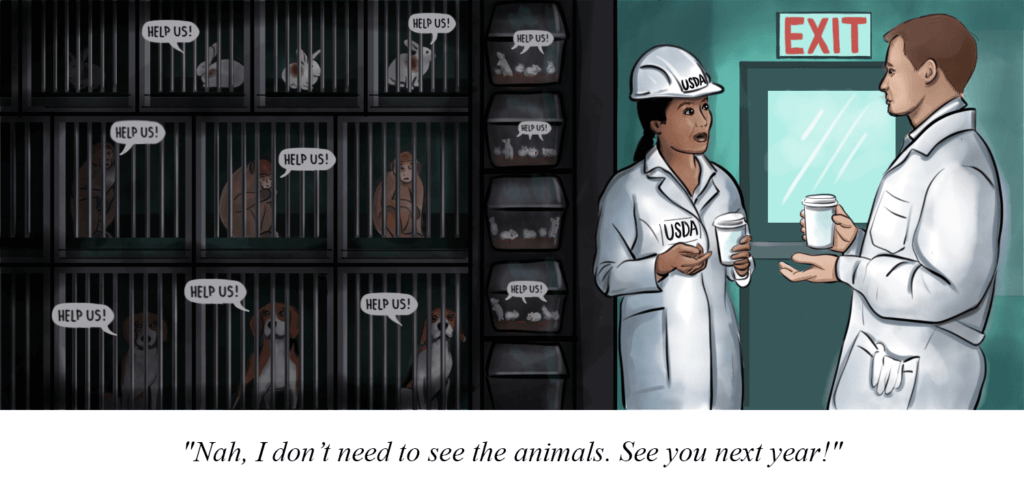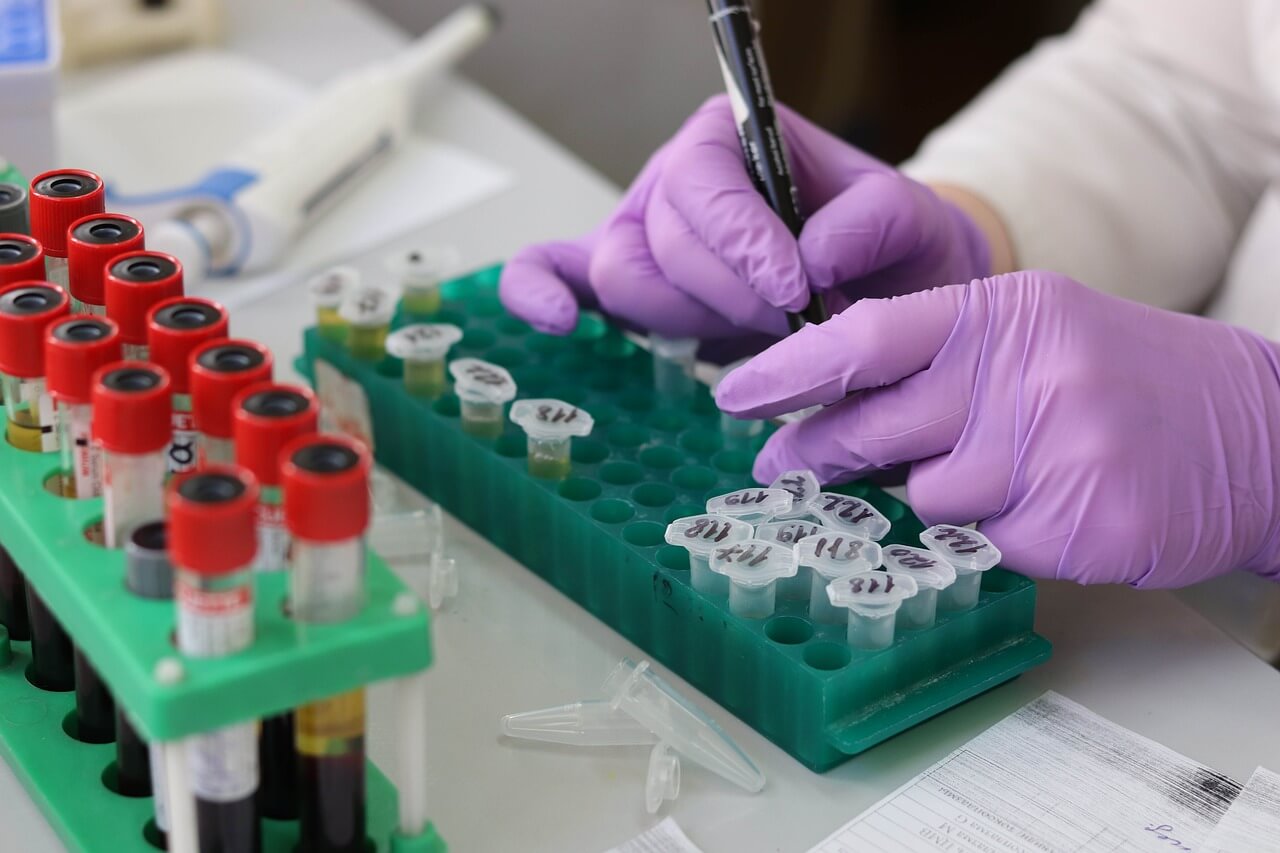Suffering Swept Under the Rug

No federal law prohibits sensitive animals from being terrorized, mutilated, electrocuted, poisoned, cut open, brain-damaged, and more in barbaric animal experiments.
The federal Animal Welfare Act (AWA) and the Health Research Extension Act of 1985 (HREA) are the only two federal laws that provide animal welfare standards for the treatment of animals in U.S. laboratories. Yet both primarily cover housekeeping and husbandry, allowing extreme acts of abuse to occur if they’re merely written into experimental designs. What’s more, the HREA doesn’t even have the force of law to hold violators accountable.

These laws stipulate bottom-of-the-barrel minimum standards, requiring, for example, that animals are at the very least fed, given water, and provided with veterinary care—as long as such care doesn’t interfere with the “scientific” objectives of the experiment.
Laws to Protect Animals Leave Much to Be Desired

At least 99% of all animals—approximately 111 million mice, 15 million fish, 50,000 horseshoe crabs, and countless birds—who suffer every year in cruel and deadly experiments are unprotected by the AWA.
Meanwhile, the HREA covers only institutions that receive taxpayer funding from U.S. federal health agencies, including the National Institutes of Health (NIH).
Estimates indicate that as many as 800 U.S. laboratories that experiment on animals aren’t subject to the AWA or HREA because they don’t meet the narrow parameters set forth by these laws.
For animals who are covered, oversight is extremely limited and punishments for wrongdoing are all but nonexistent. This delinquent system emboldens experimenters who mutilate and kill sensitive animals outside the strictures of the law—without much more than a rap on the knuckles.
- Excludes mice, rats, and birds bred for experimentation, along with reptiles, amphibians, fish, and invertebrates such as crustaceans and insects
- Sets forth the minimum standards for the treatment of animals in laboratories but doesn’t prohibit experiments—no matter how painful or pointless
- Is enforced by the U.S. Department of Agriculture’s (USDA) Animal and Plant Health Inspection Service (APHIS)
- APHIS registers laboratories that experiment on animals and licenses the breeders and dealers that sell animals to laboratories.
- APHIS inspects laboratories annually to check for violations.
- Covers institutions that receive funding from U.S. federal health agencies, including NIH
- Requires that these institutions follow the Public Health Service Policy on the Humane Care and Use of Laboratory Animals and the animal welfare guidelines laid out in the Guide for the Care and Use of Laboratory Animals
- Sets forth husbandry guidelines, such as ensuring that animals receive water, veterinary care, and so on (The guidelines don’t prohibit experiments, no matter how painful or pointless.)
- Requires institutions to self-report violations to NIH’s Office of Laboratory Animal Welfare
- Institutionally based committees are responsible for reviewing and approving proposed experiments on animals.
- They were envisioned to serve as the cornerstone of animal experimentation oversight in U.S. laboratories and as animals’ last line of defense but often operate more as rubber-stamping committees that rarely reject proposed experiments on animals.
- They are composed largely of animal experimenters, and biases and conflicts of interest contribute to the tendency of these committees to approve all protocols.
- Most state-level cruelty-to-animals laws don’t apply to animals in laboratories due to language that excludes experimentation.
- While killing, burning, and cutting open animals would rightfully prompt outrage and criminal charges outside a laboratory, these types of actions are considered “business as usual” when carried out by experimenters.
Laboratory Inspections Are Few and Far Between

Compliance with the AWA is monitored through USDA inspections, but the agency has an abysmal history of turning its back on palpable horrors or simply operating under a code of callousness.
In just one example of many, USDA inspectors, operating on a PETA tip, visited a laboratory that imprisoned dogs in harrowing conditions. The agency found nothing wrong, then declined to reinspect the facility even as multiple dogs continued to suffer and die.

The absurdity may owe to the fact that there are only about 100 inspectors who are tasked with overseeing more than 9,000 facilities—an inexcusable flaw in an already floundering system.
On the other soiled hand, institutions covered only by the HREA aren’t subject to inspections at all. Astonishingly, compliance relies on the honor system.

Equally shocking, laboratories operated by federal agencies—including the laboratories on NIH’s sprawling campuses and facilities managed by the Food and Drug Administration, the Centers for Disease Control and Prevention, and other agencies—are entirely exempt from USDA inspections.
Punishments Don’t Fit the Crimes

In U.S. laboratories, animals have been starved, overdosed, and scalded to death as a result of experimenters’ negligence, incompetence, or outright disregard. The penalty they receive for committing such blatant wickedness? Typically, it’s a mere finger wagging from the federal government.
A PETA study found that institutions that violate federal animal welfare guidelines are rarely penalized. In a sampling of the top 25 institutions that receive funding from NIH and are therefore covered by the HREA, PETA found a whopping 632 violations in just a 41-month period.
In these hundreds of horrific incidents, animals were starved and dehydrated to death, were burned and severely injured due to staff negligence, suffered preventable amputations, and more. But much as mice play when the cat’s away, these institutions regularly act with impunity, repeating egregious abuses against animals without fear of retribution. Only in the most extreme and exceedingly rare cases will the institution lose its federal funding for committing abominable abuse.
For institutions that violate the AWA (Read: viciously torture animals), the government’s punishment of choice is typically a slapdash warning. Unsurprisingly, a review of the effectiveness of this punishment found that 40% of institutions that received warnings went on to commit six or more violations from January 2011 to March 2016.
Help Us End This Broken Bureaucratic Cycle
It’s clear that the federal government is unable to ensure that animals are cared for in its own labs and in those it funds with more than $20 billion in taxpayer dollars each year. Please take action today and urge NIH to stop funding cruel and worthless animal experiments:
PETA scientists have developed a comprehensive plan for phasing out all animal experiments in favor of modern, human-relevant research methods. Please take action today and urge your local legislators to support this dynamic, compassionate strategy:
From PETA and executive producer Bill Maher, the new docuseries ‘The Failed Experiment’ exposes what most people don’t know about experiments on animals.
